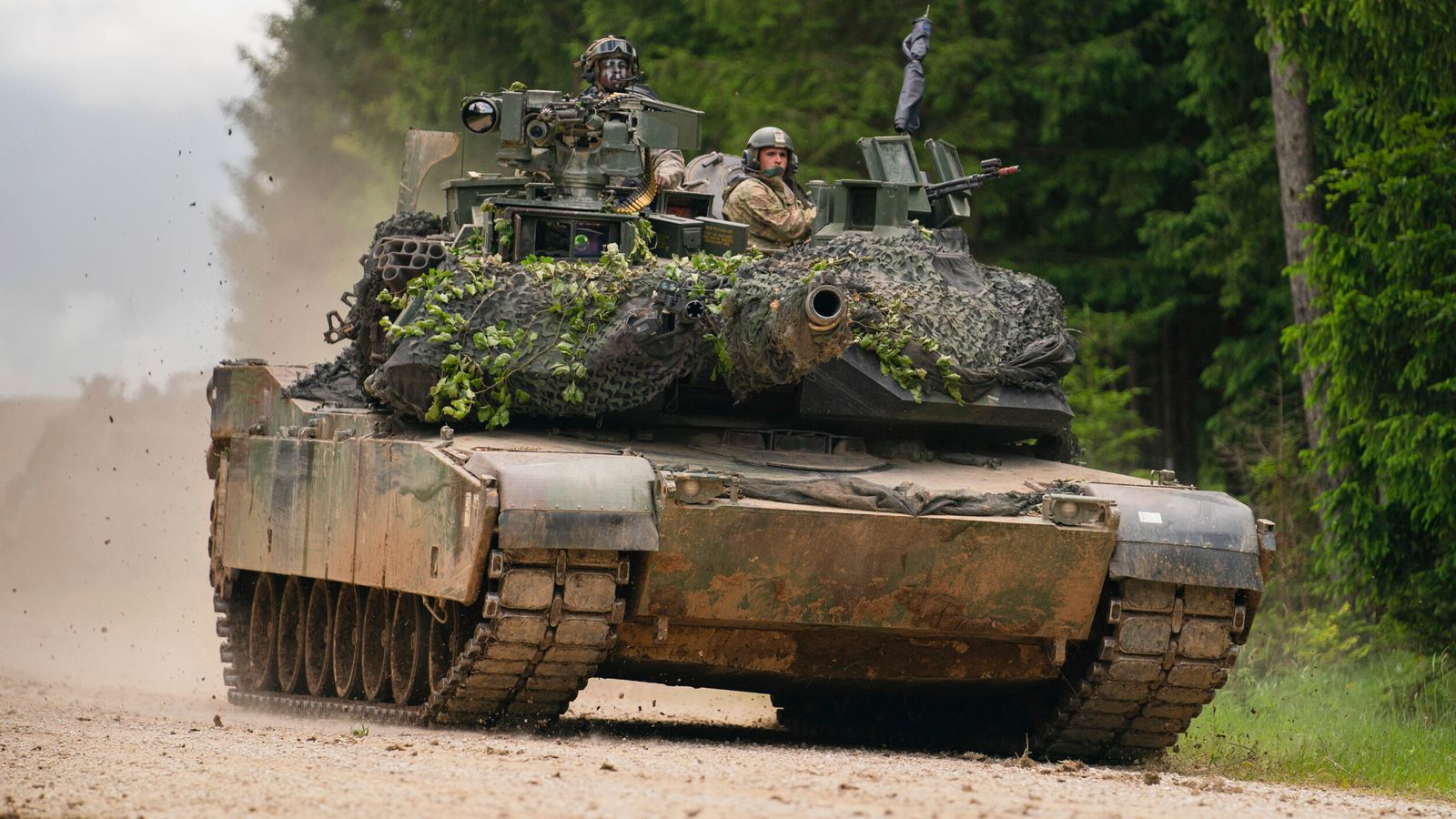Generously, you’d call the tank debate an evolution of views among Western policymakers.
Ungenerously, it’s rather a debacle and certainly doesn’t present the united front that Western nations have strived for through this year-old war.
The Ukrainians have become used to this pattern of Western indecision.
It follows a now familiar pattern: have an almighty row, say “no”, and then agree. It’s almost baked into Ukrainian request lead time.
The news from Berlin and Warsaw – that tanks can go to Ukraine after all – suggests movement from the Americans.
Remember the Germans had said consistently that they didn’t want it to be only their tank fighting the Russians. (The British offering of a handful of Challenger 2s didn’t swing them.)
The Germans wanted the American M1 Abrams tank alongside their own Leopards.
The Americans said no. Their tank is much larger, has fuel issues – it’s designed to work with jet fuel not readily available on the Ukrainian frontline, it’s far heavier and relies on a unique, complex supply chain. Remember, in war, the success of any army and its kit is wholly reliant on a constant, smooth supply chain.
Please use Chrome browser for a more accessible video player
The M1 Abrams is also highly sophisticated and packed full of manufacturing secrets including composite armour containing hard-to-penetrate depleted uranium meshing.
The battle tank is the tip of an army’s spear. If it’s destroyed and left the wrong side of advancing enemy lines, then its secrets are compromised.
It’s one thing having American troops operating and, if needed, destroying their own damaged tanks. Can they rely on Ukrainian soldiers doing the same? This will be one consideration among many for the Americans when considering supplying their Abrams.
Within the American debate, opinion has been split. “Why not provide just a few tanks, older less sophisticated models, to unlock the impasse?” some politicians and generals have asked.
Even the former British prime minister, such a staunch supporter of Ukraine, chimed in.
“Where does the Western world need to station tanks at the moment?” Boris Johnson asked.
“Guarding North Rhine-Westphalia? Protecting Tennessee? Prowling the villages of Wiltshire? So let me pose the question again: what conceivable grounds can there be for delay?”
Read more:
British nationals killed ‘attempting humanitarian evacuation from Soledar’
Doomsday Clock moves 10 seconds closer to midnight as Ukraine war rages
Boris Johnson makes surprise visit to Ukraine
At the Pentagon, the spokesman wouldn’t be drawn, even as the word from Berlin was of movement.
But spokesman General Pat Ryder did hint at an announcement down the line, talking about not wanting to “preview an announcement”.
And so expect news perhaps as soon as today from Washington. It’s likely that any American tanks will take some time to reach the battlefield.
This will allow for the supply chain concerns to be ironed out and to allow time for training. It could also provide space to explore ways to reduce the risk of any prized technology within the tanks from getting into the hands of the Russians.
Of course the perennial unknown: how will Putin react? Western tanks in the fight will change the picture and his unpredictable red lines are a constant concern.






















